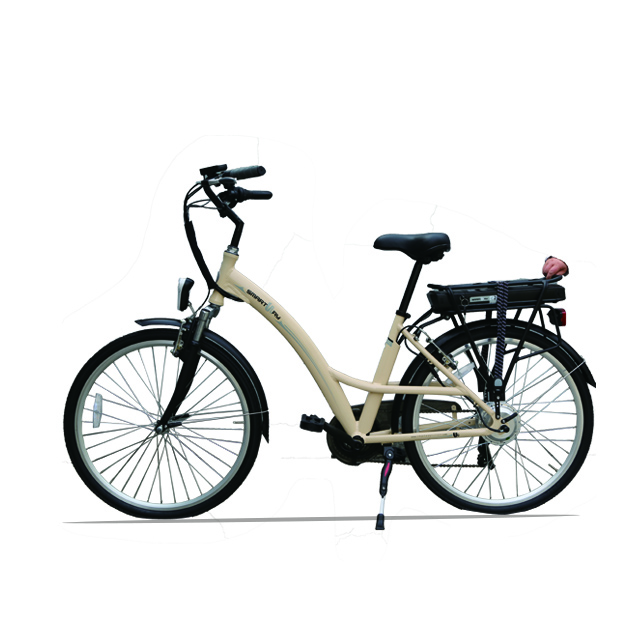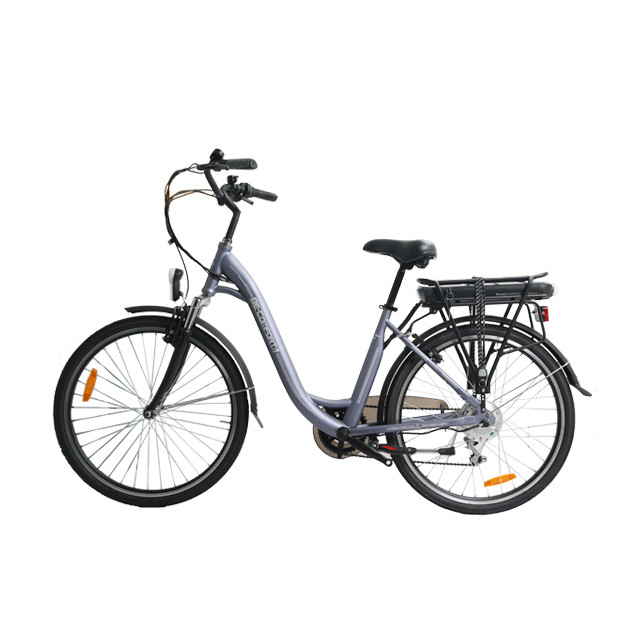-
414 Block B, ZT Times Plaza, Wuhan, Hubei, China
Blog
How Government Incentives Drive E-Bike Adoption
Summary
The adoption of electric bicycles (e-bikes) has gained momentum in recent years, significantly driven by government incentives designed to promote sustainable transportation. These incentives include rebates, tax credits, and subsidies that lower the financial barriers associated with e-bike purchases, contributing to their rising popularity. As cities and states recognize the potential of e-bikes to reduce greenhouse gas emissions and alleviate traffic congestion, many have initiated programs aimed at encouraging their use among the public. This growing trend reflects a broader shift towards eco-friendly commuting options and highlights the critical role of policy support in facilitating sustainable transportation solutions.
E-bike adoption has seen remarkable growth, particularly following the COVID-19 pandemic, which prompted a surge in interest for alternative modes of transportation. In Europe, financial assistance programs have proven effective, with countries like Germany and the Netherlands reporting e-bikes as a significant portion of bike sales. In North America, initiatives such as the E-BIKE Act, which offers tax credits for e-bike purchases, signify a growing recognition of e-bikes as an effective tool for addressing climate change. However, despite these advancements, challenges remain, including equity concerns regarding access to incentives, safety issues for riders, and regulatory inconsistencies across regions.
Prominent controversies surrounding e-bike adoption include debates over the adequacy of existing incentive programs in serving low-income communities and the safety of e-bike riders on shared roadways. Critics argue that while some programs target underserved populations, more comprehensive efforts are needed to ensure equitable access to e-bikes. Additionally, as e-bike popularity increases, concerns about rider safety and public awareness of e-bikes and their benefits persist, necessitating enhanced education and training initiatives.
Overall, the intersection of government incentives and consumer interest positions e-bikes as a promising solution for sustainable urban mobility. As the market continues to expand, supported by ongoing innovations in e-bike technology and infrastructure improvements, the potential for e-bikes to contribute to greener transportation practices remains substantial.
Historical Context
The adoption of electric bicycles (e-bikes) has experienced a significant upward trajectory in recent years, driven by various societal and governmental factors. The increasing interest in e-bikes among the U.S. public can be traced back to several key developments, particularly during and after the COVID-19 pandemic. As many Americans sought alternative modes of transportation while adhering to social distancing guidelines, e-bike sales surged, outpacing those of electric vehicles for the first time in 2020. This rapid growth highlighted a shift in consumer behavior and a newfound appreciation for cycling as a viable commuting option.
In response to this growing interest, many state governments began to implement laws that categorized e-bikes similarly to traditional bicycles, allowing their use in bike lanes and paths. This legislative change was crucial in normalizing e-bike use and making them more accessible to the public. The cycling industry also introduced a three-tier classification system for e-bikes, distinguishing them based on speed and throttle capability, further aiding consumer understanding and adoption.
Government incentive programs have played a pivotal role in accelerating e-bike adoption. In Europe, for instance, several countries have successfully implemented financial assistance programs that provide rebates and subsidies for e-bike purchases, making them more affordable for the average consumer. These initiatives have seen substantial success, with e-bikes constituting the majority of bike sales in countries like Germany and the Netherlands, demonstrating the effectiveness of supportive policies in fostering e-bike use.
In North America, similar e-bike promotion programs are emerging. For instance, the U.S. government has increasingly recognized the potential of e-bikes to reduce greenhouse gas emissions from transportation, which accounts for a significant portion of national carbon emissions. Federal initiatives, such as the E-BIKE Act, aim to encourage e-bike purchases through tax credits and rebates, promoting this sustainable mode of transport as an effective climate action strategy.
The historical context of e-bike adoption thus reveals a convergence of public interest, legislative support, and government incentives, which together have contributed to the rise of e-bikes as a practical and eco-friendly transportation solution in modern society. As this trend continues, the future of e-bikes looks promising, with increasing technological advancements and infrastructure improvements poised to enhance their appeal further.

Types of Government Incentives
Government incentives for electric bikes (e-bikes) are designed to promote their adoption and make them more financially accessible to consumers. These incentives can take various forms, including rebates, tax credits, and subsidies, and they vary widely by state and region, often changing based on local government policies and budget allocations.
Rebates
Rebates are one of the most common financial incentives offered to encourage e-bike purchases. These programs typically provide a partial refund after the buyer completes the purchase, significantly reducing the upfront cost of e-bikes. The rebate amounts can vary: for example, California offers up to $750 for new e-bike purchases, with additional incentives available for low-income residents. In contrast, some states, like Colorado, offer rebates that can reach up to $1,200. Furthermore, specific programs may offer enhanced rebates of up to $2,000 for qualifying income levels, demonstrating a commitment to making e-bikes more accessible to lower-income communities.
Tax Credits
Tax credits for e-bikes have been implemented at both federal and state levels. The E-BIKE Act allows individuals to claim a tax credit of up to 30% off the price of an e-bike, capped at $1,500 per taxpayer. This federal initiative aims to provide financial relief for those purchasing e-bikes, particularly benefiting low-income individuals who seek more sustainable transportation options. Additionally, some states have introduced their own tax credit programs, which can complement federal incentives.
Subsidies and Grants
Subsidies and grants are also pivotal in supporting e-bike adoption. Local governments and non-profit organizations may offer grants to fund e-bike programs, which can include providing e-bikes to low- and moderate-income individuals or establishing e-bike infrastructure such as bike lanes and charging stations. For instance, Colorado has initiated grant programs to enhance community access to e-bikes, thereby promoting equitable transportation solutions.
Additional Financial Benefits
Beyond direct rebates and tax credits, there are other financial incentives, such as sales tax waivers, that can further lower the cost of e-bikes at the point of purchase. These financial benefits aim to increase the affordability and attractiveness of e-bikes, contributing to their growing popularity as a sustainable commuting option. Overall, the combination of rebates, tax credits, and subsidies serves as a comprehensive strategy to encourage e-bike adoption and promote environmentally friendly transportation solutions.

Impact of Government Incentives on E-Bike Adoption
Governments across the globe have recognized the significant potential of electric bicycles (e-bikes) in promoting sustainable transportation. One of the primary motivations for these initiatives is the prospect of reducing reliance on private automobiles, which can lead to decreased traffic congestion and lower greenhouse gas emissions. As a result, many organizations and governmental bodies have introduced incentive programs to encourage e-bike adoption, such as rebates and subsidies aimed at offsetting purchase costs for consumers.
Market Growth and Sales Projections
The Canadian e-bike market, for example, has experienced remarkable growth, driven by heightened environmental awareness and supportive government initiatives. With an estimated market size of approximately 1.5 million units annually, this figure is projected to reach nearly 3 million units by 2028, reflecting a Compound Annual Growth Rate (CAGR) of 15% over the next five years. Government incentives play a crucial role in this expansion, particularly in urban areas where e-bikes are increasingly seen as a viable alternative for daily commuting.
Specific Incentive Programs
Various regions have implemented unique incentive schemes. In California, low-income households can trade in an old vehicle for significant rebates to help purchase e-bikes, while British Columbia offers a voucher program for vehicle trade-ins as well. Similarly, European nations are increasingly adopting similar measures, with almost 300 bicycle tax and purchase incentive schemes across the continent to promote cycling over driving.
Environmental and Health Benefits
The environmental impact of these programs is another critical factor. E-bike incentive programs not only encourage the use of cleaner transportation options but also promote healthier lifestyles by facilitating more active forms of commuting. By displacing car travel, e-bikes contribute to a reduction in urban pollution levels and foster a shift towards eco-friendly transportation practices, aligning with broader sustainability goals set by governments worldwide.

Challenges and Limitations
Despite the growing interest in e-bikes and the potential benefits of government incentives, several challenges and limitations hinder widespread adoption.
Equity Concerns
Equity issues are a significant concern regarding e-bike incentive programs. Critics argue that many existing initiatives do not adequately address the needs of low-income households and communities, potentially excluding them from the benefits of e-bikes. While some programs incorporate income restrictions or provide higher incentives for low-income individuals, more comprehensive efforts are required to ensure equitable access to affordable and sustainable transportation options.
Safety Concerns
As e-bike popularity rises, safety becomes a pressing issue. There are apprehensions about the safety of riders, particularly those unfamiliar with road rules or e-bike operation. Advocates suggest that incentive programs should include mandatory safety training and education components to foster responsible riding practices and enhance overall safety on the roads.
Supply Chain Challenges
The COVID-19 pandemic has created supply chain disruptions that further complicate e-bike adoption. Delays in production and distribution have affected the availability of e-bikes, which can deter potential users who might otherwise consider making a purchase.
Lack of Awareness
A significant barrier to e-bike adoption is the public’s lack of awareness regarding their existence and benefits. Surveys indicate that a notable percentage of people are either unaware of e-bike options or do not understand what they are. This lack of information limits the potential user base and highlights the need for increased educational efforts to promote e-bike awareness and acceptance as a viable transportation mode.
Funding Obstacles
Funding remains a critical obstacle for sustaining e-bike incentive programs. Although the benefits of e-bike adoption, such as reduced road damage and improved air quality, are significant, the initial costs can be prohibitive for some local governments and organizations. Continued investment is necessary to support these initiatives and ensure their long-term viability.
Regulatory Variability
Local regulations surrounding e-bikes vary widely across different states and municipalities. Some regions have implemented specific age limits and licensing requirements, while others impose few or no restrictions at all. This inconsistency can lead to confusion among potential riders and hinder the integration of e-bikes into existing transportation networks. A more standardized approach to e-bike regulations may help facilitate broader adoption and acceptance.
Future Outlook
The future of e-bike adoption appears promising, buoyed by increasing consumer interest and supportive government policies aimed at promoting sustainable transportation solutions. As awareness of the environmental and health benefits of e-bikes continues to grow, manufacturers are expected to innovate further, integrating advanced features such as GPS tracking, app connectivity, and autonomous capabilities that enhance user experience and safety.
Market Growth Projections
Market analysts project that the e-bike segment will experience significant growth over the coming years. With North America and Europe leading the charge, cities across these regions are investing in cycling infrastructure, which is crucial for accommodating the growing e-bike population. Notably, shared micro-mobility services are becoming a pivotal factor in this growth, encouraging more people to use e-bikes for daily commutes and recreational purposes.
Government Incentives and Policies
The role of government incentives cannot be overstated. Over 100 cities and states in the U.S. are launching or have launched e-bike incentive programs to encourage adoption among consumers, particularly targeting low-income and underserved communities. These programs often involve financial assistance, discounts, and rebates designed to make e-bikes more accessible. As the Biden administration emphasizes climate action, it is likely that more robust federal programs will emerge, further driving the adoption of e-bikes.
Environmental and Economic Impact
From an environmental perspective, e-bikes represent a significant reduction in greenhouse gas emissions compared to traditional gasoline-powered vehicles. The transition towards e-bikes aligns with broader sustainability goals, and the potential for recyclable materials in e-bike construction may further enhance their eco-friendliness. Economically, the growing e-bike market offers opportunities for job creation in manufacturing, maintenance, and support services, contributing to local economies while promoting green transportation initiatives.
Challenges Ahead
Despite the optimistic outlook, challenges remain. Safety concerns, particularly related to battery technology, and the relatively low awareness of e-bikes in the U.S. compared to Asian and European markets pose hurdles that need addressing. Additionally, research is still needed to assess the effectiveness of existing incentive programs and identify best practices for future initiatives.










